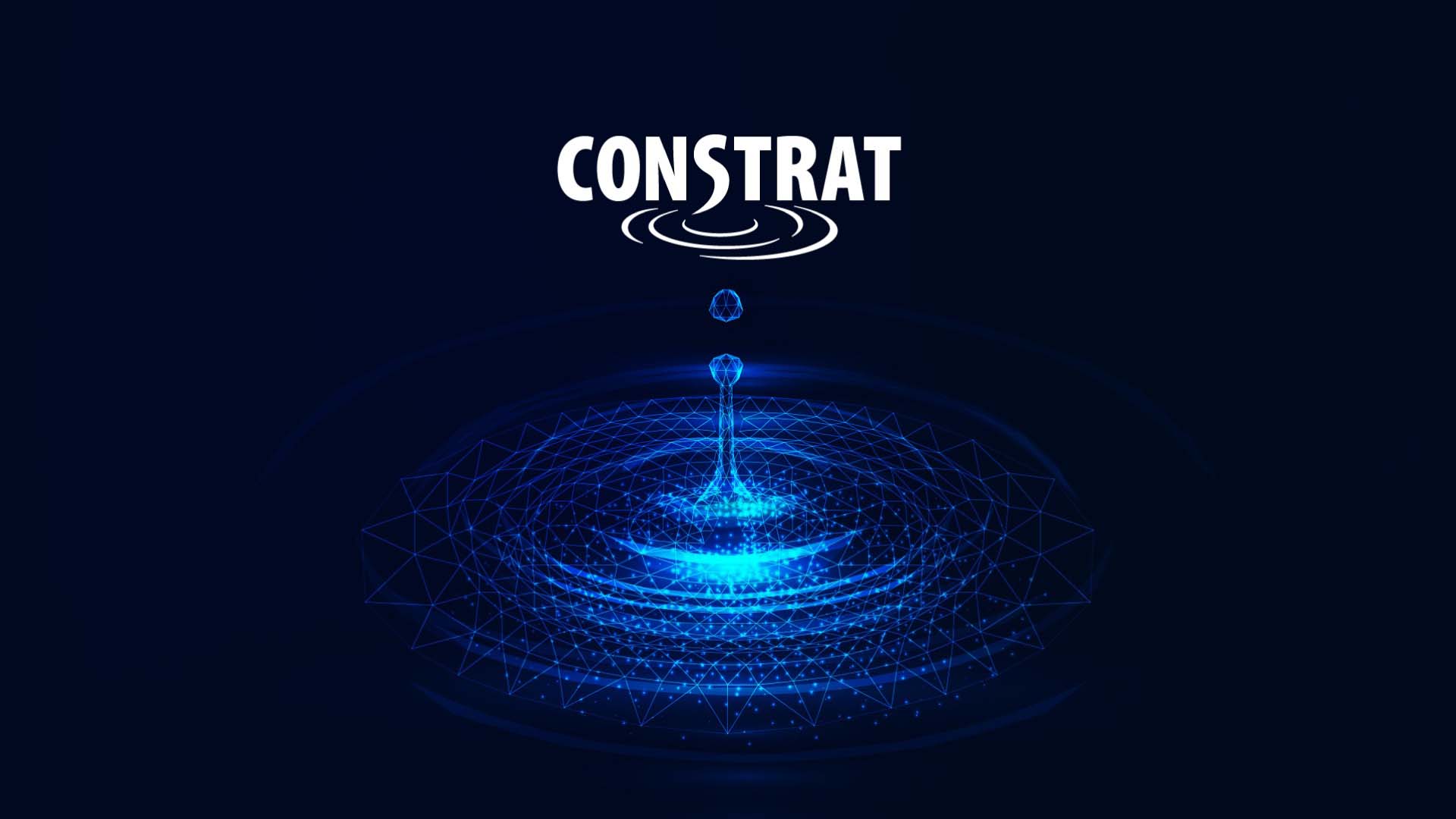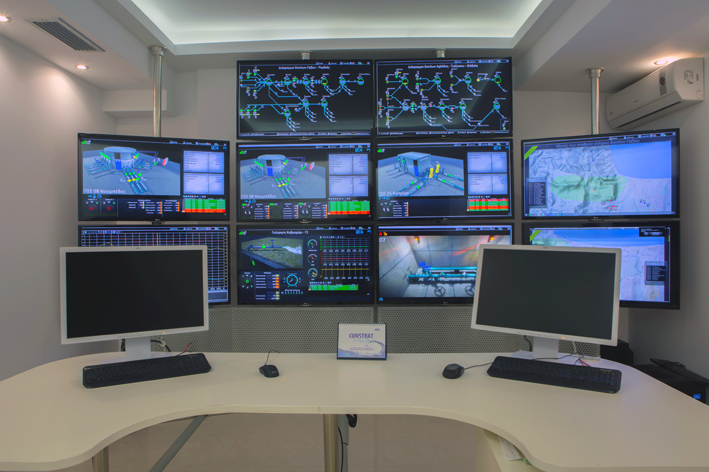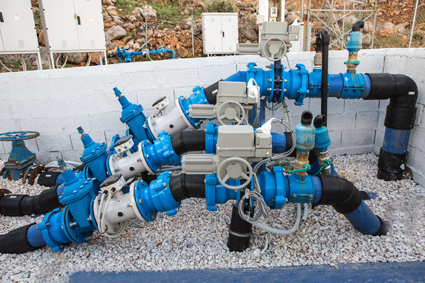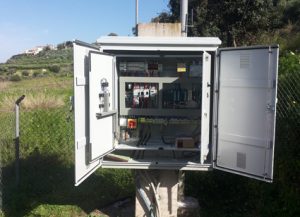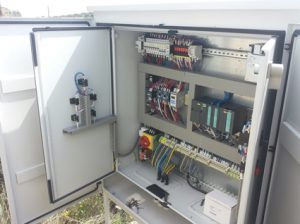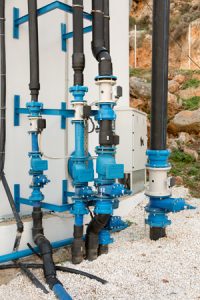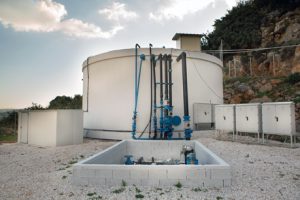PROJECT DESCRIPTION
This system achieves the monitoring, remote control, remote operation, and leak detection of the existing external and internal water supply network of the Municipality of Malevizi's Gazios district. It includes:
- A Central Control Station (CCS) through which operators issue commands, monitor, and process the data collected from the local control stations of the external and internal water supply network of the Gazios district in the new Municipality of Malevizi.
- Forty-six (46) Regional Control Stations (RCS) of the external water supply network, which monitor and control all the elements that make up each external network station (pumps, boreholes, reservoirs, instruments, etc.). The control stations communicate with the central station (CCS) as well as with each other, using a wireless GPRS-GSM communication network to exchange data, commands, and information.
- Ten (10) Local Control Stations of the Internal Network (ISD) were installed at key points of the internal network. They collect information from the elements connected to them (pressures, flows, etc.) and transmit this data via the GSM wireless network to the Central Control Station (CCS) for further processing. At the same time, they will adjust the pressure in the zones of the network they monitor, within predefined limits, based on the demand for flow. This will help reduce apparent leaks in the network and prevent damages caused by high pressure (pipe bursts, etc.), thereby extending the life of the network and saving water for the Malevizi Water and Sewerage Utility (DEYAM).
With the operation of this system we achieved the following targets:
- The reduction of annual potable water losses and total consumption in the Municipal Districts of the Municipality, through effective leak management and prevention of overflows.
- The reduction of the burden on the water reserves and water intake sources of the area.
- The contribution, through more sustainable water extraction, to the improvement of the quality of the reserves and the rational management of the water resources in the area.
- The timely identification of the source of potable water losses and the support of operators during the process of isolating sections of the network, thereby reducing water loss.
- The support of technical services in the precise identification and rapid handling of leaks and overflows, with minimal disruption to the normal water supply and distribution service.
- The improvement of service levels for the consumer through the reduction of disruptions caused by leaks or other failures (e.g., reservoir overflows, pump failures, chlorination device malfunctions, etc.).
- The reduction of energy consumption in the pumping stations and boreholes.
- The reduction of labor dedicated to low-priority tasks.
- Supervision or operation of the sections and instruments of the water supply network.
- The collection of statistical data for medium-term and long-term planning and scheduling of the network's operation.
- The gradual reduction of network leaks through the collection and monitoring of data from its operation during nighttime hours.
- Increased security in the operation of the network facilities.
- The detection and handling of malicious activities (illegal connections).
- The ability for automatic pressure adjustment, and consequently, the significant and effective reduction of hidden leaks during hours when there is no demand from consumers.
- Energy savings from the controlled operation of the pumps.
- The protection of the pumps from voltage faults, water shortages, etc.
- The increase in the lifespan of the pumps through the "smart" operation of the pumps as well as continuous monitoring of parameters such as flow rate, operating hours, power supply, monitoring of power on the motor shaft, etc.
- The continuous recording of consumption (outflows from the reservoirs and the inflows of the individual networks of the internal network), which provides useful information for detecting serious leaks.
- The minimization of pump downtime due to issues, and consequently, the maximization of continuous coverage of water supply needs.
- The reduction of response time to address any faults, such as: pump failure (water shortage in the network), sudden pressure drop (leak), sudden increase in flow (pipeline break), due to immediate notification of the responsible technicians via SMS when each problem occurs (24-hour monitoring and alerting).


